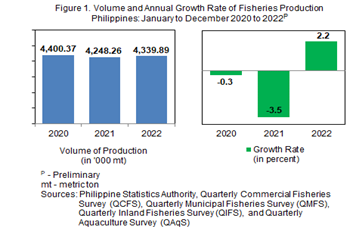
In 2022, total fisheries production grew to 4,339.89 thousand metric tons or by 2.2 percent, from the previous year’s output of 4,248.26 thousand metric tons. Increases in production were noted in marine municipal fisheries and aquaculture, while commercial and inland municipal fisheries reported setbacks during the year. (Figure 1 and Table 1)
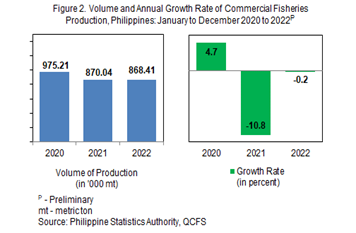
The total volume of production for commercial fisheries during the year was estimated at 868.41 thousand metric tons. This indicates a decline of -0.2 percent from the output a year ago of 870.04 thousand metric tons. The subsector’s share to total fisheries production in 2022 was 20.0 percent. (Figure 2 and Table 1)
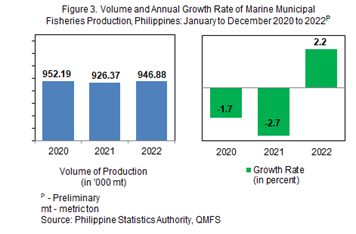
The marine municipal fisheries output reached 946.88 thousand metric tons during the year. It posted an increment of 2.2 percent from the 2021 production level of 926.37 thousand metric tons. Of the total fisheries production in 2022, the subsector shared 21.8 percent. (Figure 3 and Table 1)
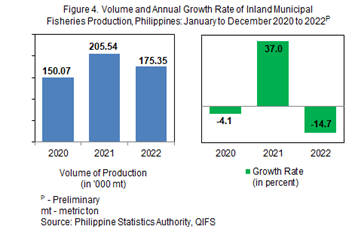
The inland municipal fisheries production was registered at 175.35 thousand metric tons in 2022. The volume of production during this period indicates a decrease of -14.7 percent from the 205.54 thousand metric tons output in the previous year. About 4.0 percent of the total fisheries output came from inland municipal fisheries. (Figure 4 and Table 1)
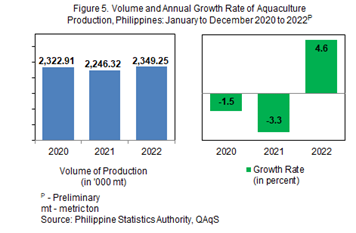
The total harvests from aquaculture was estimated at 2,349.25 thousand metric tons. Compared with the 2,246.32 thousand metric tons recorded output a year ago, this exhibited a 4.6 percent increase. Aquaculture subsector constituted the biggest share of 54.1 percent to the total fisheries production. (Figure 5 and Table 1)
Of the 20 major species, increases in production were mainly noted in seaweed (15.0%), skipjack (gulyasan, 5.6%), yellowfin tuna (tambakol/ bariles, 14.1%), and squid (pusit, 22.9%). (Table 2)
On the other hand, significant declines in production were reported in milkfish (bangus, -12.6%), bali sardinella (tamban, -12.3%), and tilapia (-10.6%). (Table 2)
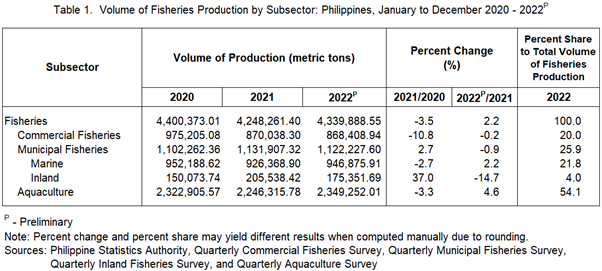
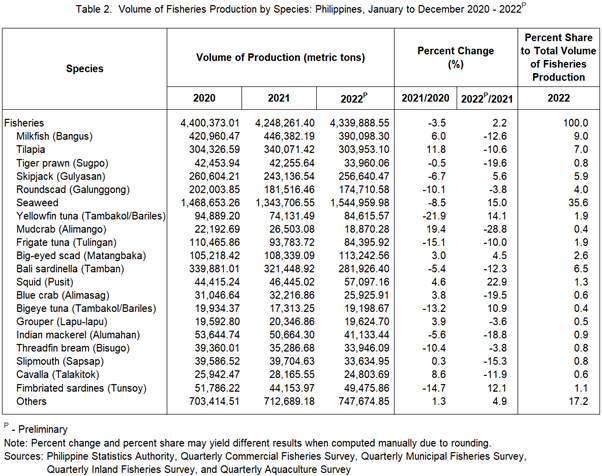
DIVINA GRACIA L. DEL PRADO, Ph.D.
(Assistant National Statistician)
Officer-in-Charge, Deputy National Statistician
Sectoral Statistics Office
